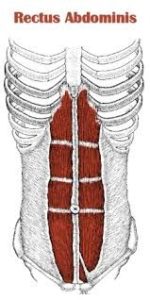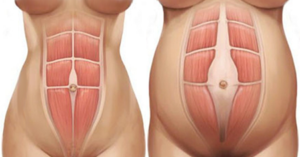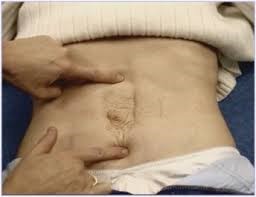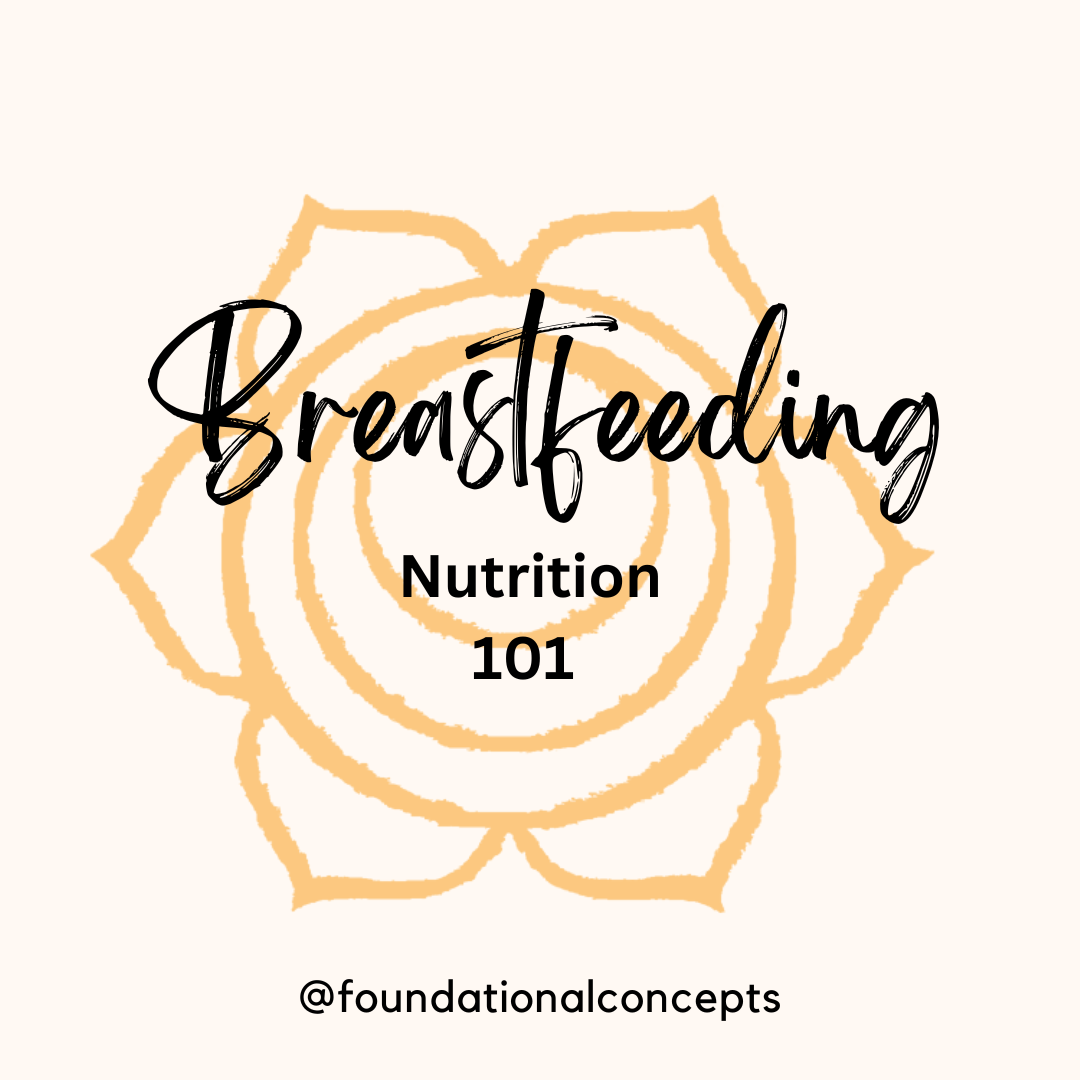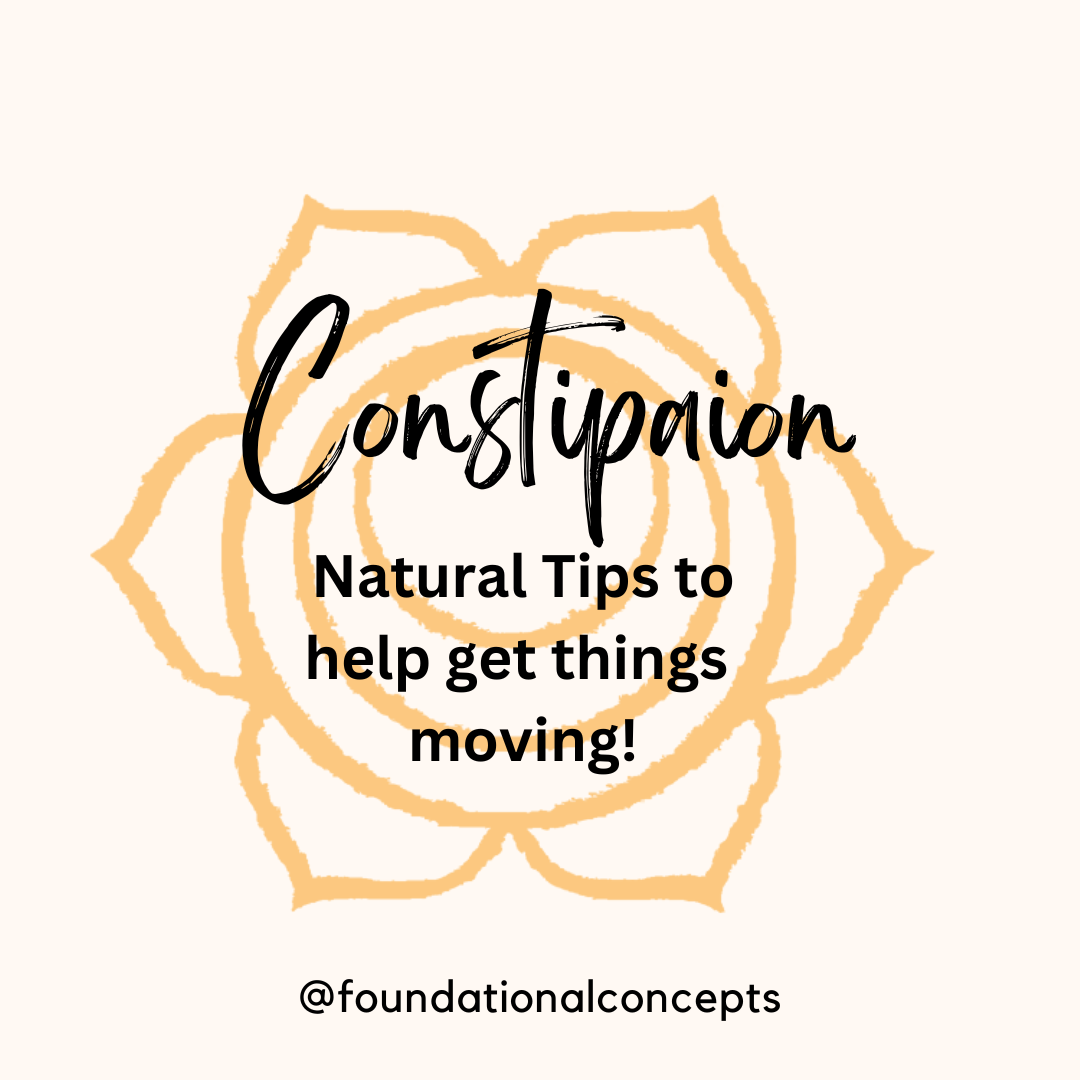Nutrition plays such an important role in our pregnancies and post-partum periods. Breastfeeding requires time…
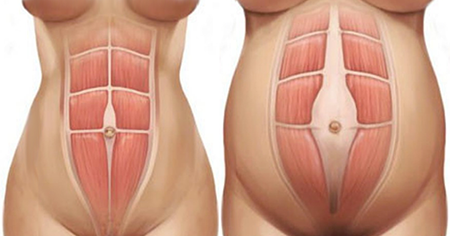
Diastasis Rectus Abdominus – What Is It and How Do We Treat It?
Are you standing in front of a mirror months after giving birth, looking at that saggy belly wanting to cry? Maybe you feel weak when you try to get up but are afraid of making it worse in your attempt to strengthen. Maybe you have googled and found a million different pieces of advice on what to do or not to do. How are you supposed to decide what is best? Today’s blog will discuss how to improve what is likely a Diastasis Rectus Abdominus (DRA), a separation or weakness in the abdominal wall tissues.
Let’s start with what it is. Every woman in the last trimester of pregnancy develops what is medically called a Diastasis Rectus Abdominus (DRA). Diastasis truly means “separation”, Rectus Abdominus is just the name of the muscle in the abdomen in which it occurs.
Figure 1Rectus Abdominis Muscle with central fascial line, Linea Alba
The white line of tissue is a strong fascial connective tissue called the Linea Alba. This is what is stretched in pregnancy.
Figure 2 Leftt: normal abdominal wall pre-pregnancy, Right: DRA in pregnancy
Leaving something like this in its wake:
Figure 3 DRA
Everyone will develop this during pregnancy, and most will go away by 8 weeks post delivery without needing any attention. However, about 35-40% of women will have a diastasis rectus abdominus at 6 months post-partum. Typically, if it lingers past 8 weeks, it remains the same at 1 year after baby. Research has failed to find any risk factors that might identify who is likely to still struggle with a DRA after the 8-week mark. Frustrating statistics, yes. But don’t let these numbers get you down! There is hope for improving it.
As a specialist in post-partum recovery, we get to see these frustrating abdomens improve in strength, endurance and function, and yes, appearance too. The trick is rehabbing the muscles that are damaged in pregnancy and childbirth. This means restoring the correct muscle control and timing to provide good stability in the spine, pelvic and hips. WHAT? That sounds complicated. The truth is, it isn’t really.
What a specialist in post-partum care can do is look at you individually, your body, your movement patterns and strategies and determine where you are failing. Can you contract your pelvic floor? Is there too much activity in your pelvic floor? Are you using too much of your upper abs and not enough of the lower abs? Or maybe your Obliques have taken a hiatus and aren’t doing much. These are all questions that our specialists can answer for you. And teach you the proper exercises to restore the function of your abdominal wall and your pelvic floor, spine and hips.
All the online do’s and don’t are likely no off base. However, they haven’t seen you personally. I can speak form experience that every woman with DRA has a different movement strategy and needs different exercises and treatment to address it. So, what all the information online isn’t telling you is this: you need to get to the bottom of your body’s dysfunction. This will provide you with a successful plan that is met with reward rather than frustration and results instead of disappointment.
What will getting to the bottom or your individual dysfunction do for you? It will give you confidence to be active and exercise without the worry you are harming something. It will give you the improved feeling of strength when you lift baby or perform daily tasks. It will restore the function of the abdomen, so you can go on and work out how you would like to improve the appearance of your belly, safely. It will also reduce the risk of developing an injury, pelvic pain, or prolapse. To read more about lingering back pain after baby check out our back pain blog here.
At foundational Concepts, we specialize in post-partum care. What value can we add back to your life after baby? It only takes a minute to contact us and find out. We offer free phone consultations to answer more questions you may have! Connect with one of our specialists to find out more about the experience you will be given at our practice.
–Sarah Dominguez, PT, MSPT, CLT, WCS, CMTPT

